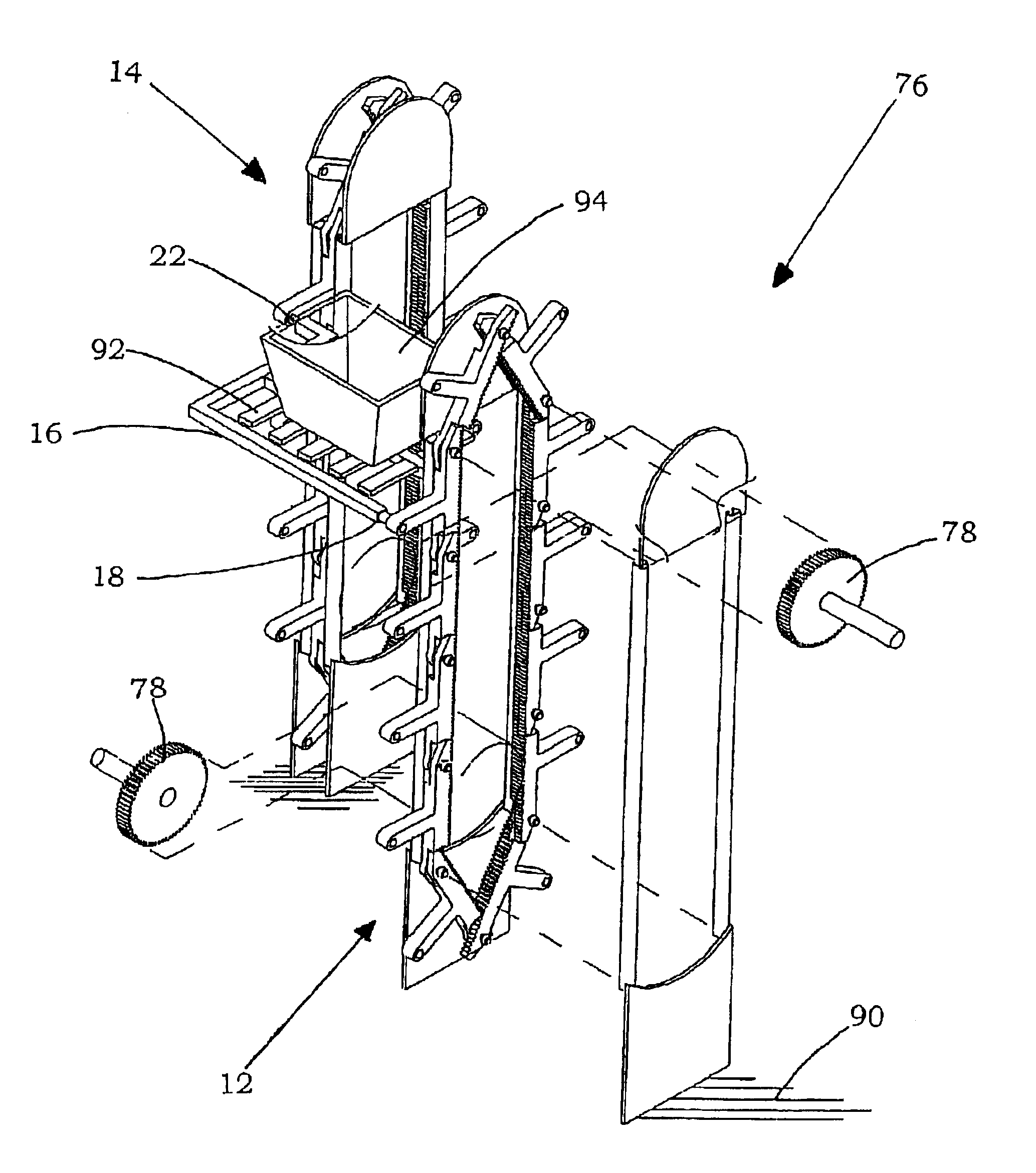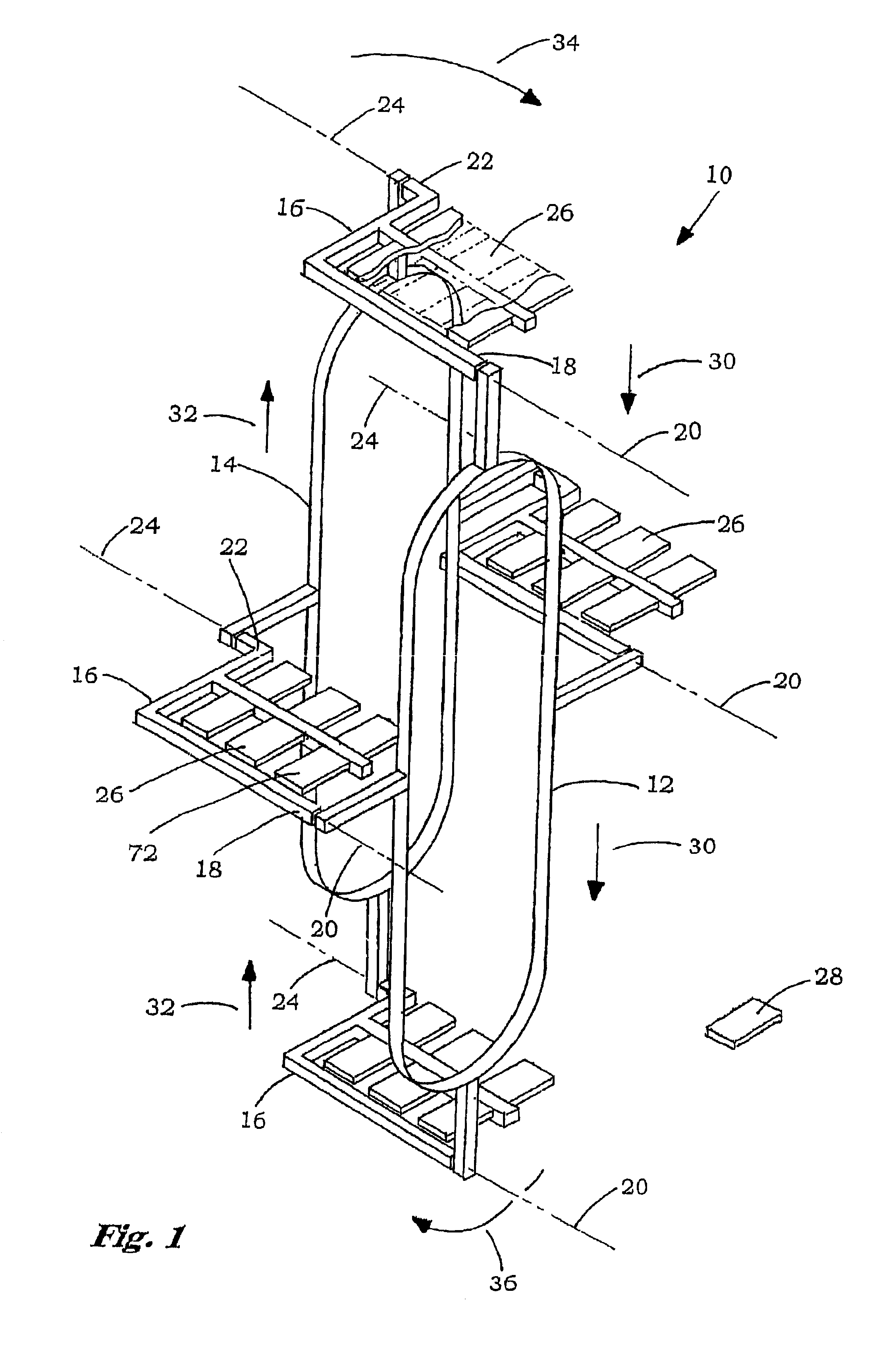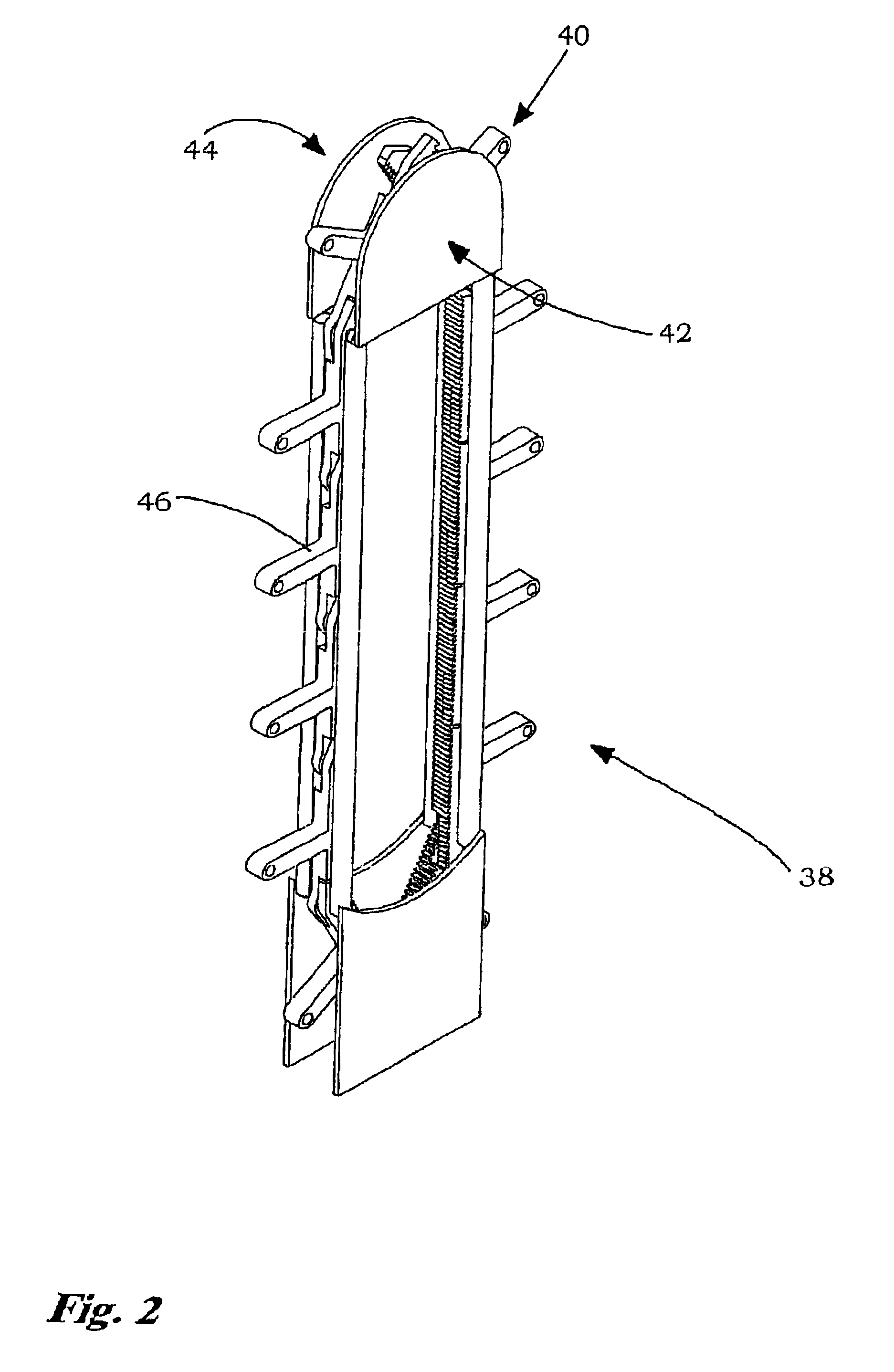Moving crank mechanism
a crank mechanism and crank technology, applied in the field of conveyor mechanisms, can solve the problems of low cost and uncomplicated storage systems that are not very efficient or flexible in their ability, complex and expensive systems, and the ability of low cost and uncomplicated storage systems to achieve the effects of fast access, fast access, and increased efficiency and flexibility of the system
- Summary
- Abstract
- Description
- Claims
- Application Information
AI Technical Summary
Benefits of technology
Problems solved by technology
Method used
Image
Examples
Embodiment Construction
[0038]Referring now to the drawings, for the purposes of illustration and not limitation, wherein like reference numerals designate identical or corresponding parts throughout the several views, there is illustrated generally at 10 a vertical lift mechanism of the present invention wherein the endless loops 12 and 14 are offset horizontally from one another.
[0039]The moving crank mechanism is shown schematically in FIG. 1 to facilitate the discussion of the unique features of the mechanism and its operation. The moving crank mechanism 10 comprises a first endless loop 12, a second endless loop 14, and a plurality of crank members 16. Each crank member has a first journal end 18 establishing a first axis 20 and an opposed second journal end 22 establishing a second axis 24. It is significant that the opposed first and second axes for each crank member are offset and substantially parallel to one another. This parallel offset establishes a crank plane between the axes for each crank m...
PUM
 Login to View More
Login to View More Abstract
Description
Claims
Application Information
 Login to View More
Login to View More - R&D
- Intellectual Property
- Life Sciences
- Materials
- Tech Scout
- Unparalleled Data Quality
- Higher Quality Content
- 60% Fewer Hallucinations
Browse by: Latest US Patents, China's latest patents, Technical Efficacy Thesaurus, Application Domain, Technology Topic, Popular Technical Reports.
© 2025 PatSnap. All rights reserved.Legal|Privacy policy|Modern Slavery Act Transparency Statement|Sitemap|About US| Contact US: help@patsnap.com



